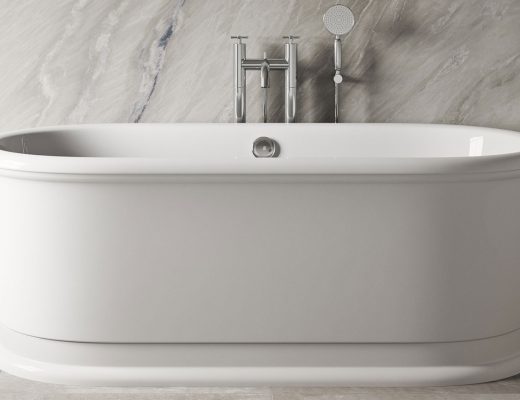What is Japandi? Well, firstly, it’s an evergreen aesthetic. Much like fashion, interiors has some looks that never really go out of style. They might wax and wane in popularity, but they’re always there, like the little black dress.
Japandi is one of these aesthetics. Characterised by a calm, cosy feel that is also effortlessly elegant, it’s a reassuring constant that runs concurrent to other trends.
But what is Japandi? And what’s characteristic about this style?

Japandi 101
As you might have guessed, the name is a combination of two words – Japan/Japanese and Scandi. And that’s exactly what it is: a mix of these two key interior styles.

You’d be forgiven for thinking the designs it’s based on are incredibly different.
They’re from opposite sides of the world, after all, and from countries whose cultures seem just as different at a glance.

But dig a little deeper and you’ll find that, on the whole, Japandi simply makes sense.
It combines two very similar sensibilities and design approaches into one cohesive package that’ll make your home feel welcoming and warm.

If you were to break it down, Japandi is influenced by two key cultural concepts: the Japanese wabi-sabi and the Danish and Norwegian hygge.

What are the key elements?
One of the defining features is Japandi’s use of natural materials, especially wood and fabrics such as linen. Colours are generally neutral, but that doesn’t mean everything is creams and whites paired with blonde wood – you can, of course, choose colour too.

For example, dark anthracite pairs well with cream; but it looks even better if you add accents of soft pink, eggshell blue, or even mint.
The focus on nature echoes throughout, too, with wood that is – or at least looks – untreated. When you hear Japan you might think of gorgeous lacquered furniture in deep reds and strong black, but you won’t find any of that in a Japandi scheme.

Instead, the style leans more towards a Zen approach. While that’s obviously not a design style, I’m sure the word triggers associations – like stone gardens, bonsai trees, and maybe even a traditional Japanese home with delicate (but surprisingly strong and weather proof) rice paper doors and lots of beautiful wooden furniture.
And if you think about it like that, the Scandinavian design ideals aren’t too different after all. The focus here is on making furniture that is practical and unfussy, but still aesthetically pleasing. You’ll find clean lines, soft curves, and – as mentioned – plenty of light wood. Beech is particularly popular and creates an easy coastal feel.

But how can I create a Japandi look in my home?
You might have a good idea already, but let me sum up some key points.
First of all, start by keeping it natural. Materials such as rattan, bamboo, cotton, hemp, or paper are ideal. Make sure any wood isn’t too white and bleached – you want to create a cohesive scheme where nothing dominates.
Harmony and design balance are the final goal.

You can introduce pattern in a range of ways. Wood panelling is a good choice, as it adds the natural element while also bringing in pattern through the way you lay it.
But you can also introduce Asian-inspired florals, if you want to spice up your scheme. Or, alternatively, choose a traditional Japanese design such as the Asanoha pattern, which represents hemp leaves.

But maybe include a little furniture
I said you won’t find lacquered furniture, but I’ll need to backtrack a little: that’s not 100% true. Mix and match untreated wood pieces with more elaborate designs (but keep balance in mind) to add interest to your scheme.
Feel free to play with textures. Japandi is all about harmony, but that doesn’t mean you’re restricted. Linen that gets softer over time pairs well with hemp and cotton, or even some (fake) fur, to create a sumptuous feel you’ll want to sink into.

For the lighting, choose sleek pieces that don’t draw too much attention. Personally, I’m fond of delicate china lampshades, but you can also choose wood, paper, or even metal – as long as it keeps the balance, you’re good.
And finally, don”t accessorise too much. Minimalism is one of the key pillars of Japandi design, so choose some highlight pieces to create a curated look. Make sure they stand the test of time, too, for continued joy and harmony.

We touched on it earlier, but why not find out exactly what a Scandi aesthetic looks like here?




